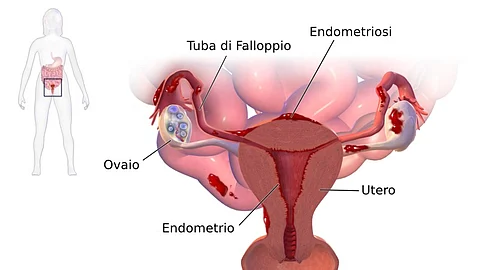

RUDN scientists have shown the possibility of treating endometriosis with the help of macrophages - immune cells that help fight foreign agents. A new approach in the future can replace the standard treatment with surgery. The results are published in The FASEB Journal.
A common gynecological disease, endometriosis, occurs when cells of the endometrium, the inner layer of the uterus, begin to proliferate outside the endometrium itself. The standard care for endometriosis is the removal of endometrial lesions. However, more than half of the patients experience repeated cases of endometriosis. Researchers from RUDN University suggested that macrophages, cells of the immune system that absorb foreign and toxic particles, can be used to treat endometriosis.
“Endometriosis is a chronic disease in which endometrial cells are found outside of it. Laparoscopy remains the gold standard in the treatment of endometriosis. But in half of the cases there are relapses. Therefore, new effective non-invasive methods are needed. We hypothesized that increasing the proportion of activated (M1) macrophages capable of fighting endometriotic lesions might help in the treatment of endometriosis. Our goal was, firstly, to assess the composition of macrophages in the foci of endometriosis - which macrophages are there more: pro- inflammatory (M1) or anti-inflammatory (M2) Secondly, to test the effectiveness of the introduction of activated M1 macrophages as a potential anti-endometriosis agent,” said Andrey Elchaninov, MD, Leading Researcher, Laboratory of Medical Biotechnology, RUDN University.
The researchers studied the composition and specialization of macrophages in a mouse model of endometriosis. Then, the experimental group was injected with activated macrophages M1 type, with a pro-inflammatory phenotype, and the control group was injected with non-polarized macrophages, that is, they did not receive “activation”. Macrophages were examined using immunohistochemistry, Western blot technique, and PCR tests.
At the first stage, RUDN University researchers found that macrophages with anti-inflammatory "specialization" (M2) prevail in endometriosis foci. After the introduction of M1 macrophages, the size and number of endometrial foci decreased compared with the control group. Statistical analysis showed that the results obtained are not random, and M1 macrophages did reduce the damage in animals.
“According to the results of the work, we studied the cellular composition and phenotype of macrophages in the foci of endometriosis: it was shown that anti-inflammatory M2 macrophages predominate in the foci. We also obtained the first results on the positive effect of the introduction of M1 macrophages in a mouse model of endometriosis . In the future, macrophages can potentially be used to treat endometriosis in humans,” said Polina Vishnyakova, PhD, Assistant Professor at the Department of Histology, Cytology and Embryology, RUDN University (GN/Newswise)
